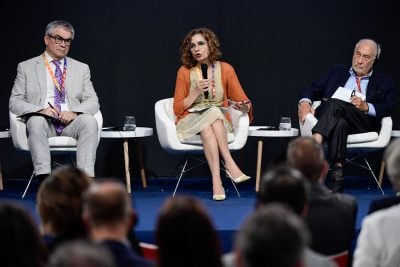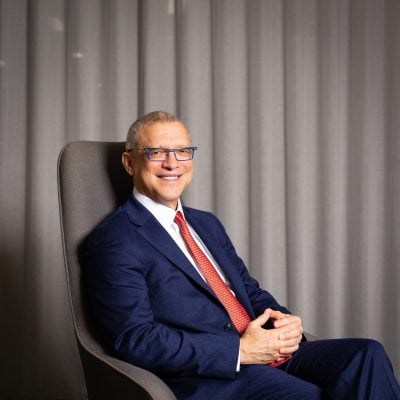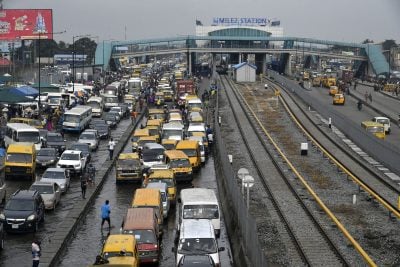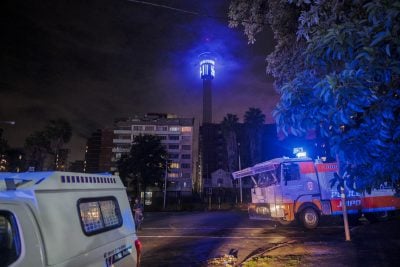In its first three years the Ethiopia Commodity Exchange has traded over 221,000t of goods, worth over $1bn – with a default rate of zero. What lessons does the ECX have for the region? MJ Morgan reports.
Trading began on the Ethiopia Commodity Exchange (ECX) in April 2008 as the country wanted to ensure a better deal for its exporters as well as to try and reduce food shortages and tackle famine.
Exporters, it was felt, had not been getting a fair share of the value of their exports – not when comparison was made between the prices paid to farmers and those gained on international markets. Additionally, a lack of infrastructure, access to finance and market information was hampering the development of Ethiopia’s agricultural potential: in a country where 80% of the population work in the sector and where, sadly, famine is an all too familiar problem.
Dr Eleni Gabre-Madhin, a former World Bank economist and now CEO of the ECX, said recently that Ethiopia could produce four times as much coffee as it does. Exports in 2009/10 amounted to 319,647t and the government aims to raise this to over 600,000t by 2014/5.
Issues regarding quality, consistency and quantities all restricted trade prior to the ECX’s inception. The introduction of standardised products, the prompt settlement of payment (within one day) and the assurance of product quality have all contributed enormously to improving the business environment, as has the introduction of bonded warehousing and the provision of clearing.
The ECX aimed to, and has achieved, a reliable, transparent and efficient market. There are now 60 commodity delivery sites across the country. Implementing certifiable quality controls, standardised bagging, a nationwide infrastructure for transportation and payments for the first time are all remarkable achievements, all the more so for taking place in a context of limited infrastructure and given weak financial institutions.
The exchange is a non-profit partnership between the private and public sectors with segregate ownership, membership and management. It was financed initially with $9.2m provided by the World Bank, USAID, CIDA, the World Food Programme and the government of Ethiopia. From an initial roster of 12 traders on day one there are now hundreds of trading members.
Shift of trading power
The establishment of tertiary infrastructure, such as these exchanges, represents a shifting of global economic power from consumers to producers. The president of the African Commodities Exchange says that 13 countries are currently planning or implementing similar exchanges.
The ECX now trades coffee, haricot beans, maize, sesame and wheat and provides a free phone number that enables farmers to access prices. The system is capable of processing more than 20,000 calls a day.
Better market information has changed the horizon of farmers from a focus on local markets to international ones – farmers have consequently become more market savvy in their offerings.
As reported in the last edition of African Banker, the ECX has now launched an SMS and Interactive Voice Receiver system. Deal information is transmitted across the country within two minutes and there are 31 price displays across the country, in addition to the ECX website.
As well as producers gaining access to spot and future prices, the ECX also allows for the operation of inventory financing, whereby farmers can deposit produce in certified warehouses and then use the receipts as collateral for loans, via a warehouse receipt system (WRS). The exchange also has the expertise to assess products, is able to act as an ‘honest broker’ and can guarantee any loans made.
According to Bharat Kulkarni, chief economist at the ECX, the sophisticated exchange now handles more than $7m per day in transactions and has resulted in sesame farmers receiving a – much enhanced – 78% of the value of their exports. The World Food Programme is also now using the exchange to bypass corrupt middlemen.
The ECX had initially been envisaged primarily as a marketplace for soft commodities such as grain (Ethiopia is the second-largest producer of maize on the continent after South Africa) in order to overcome the inefficiencies in their sale and purchase.
However, since August 2008 most of Ethiopia’s economically crucial coffee exports have been sold via the ECX. This decision regarding the world’s second most-traded commodity was not uncontroversial. There are fewer buyers for coffee since five companies (Nestlé, Philip Morris, Procter & Gamble, Sara Lee and Kraft) purchase some 70% of the world’s coffee. The move has resulted in “the sale of speciality coffees at commodity grade prices” but restricts differentiation (the sale of speciality coffees) along with direct trades.
To overcome the grip of the big buyers, many coffee producers internationally have pursued the creation of niche products, with greater transparency about their origin. It is argued that the sale of coffee through ECX boosts the market as a whole but at the expense of allowing its buyers to move in this direction, instead moving them towards standardised commodity grades.
However, some cooperatives and commercial farms (although not smallholders) are permitted to trade direct, which allows consumers some access to the remarkable quality and variety of Ethiopian coffee. Some critics argue that farmers are not adequately represented on the ECX board but there is little doubt nevertheless that ECX has coped admirably with the sale of coffee.
In fact, the ECX introduced Direct Speciality Trade (DST) in February in order to tackle the differentiation question and meet the needs of major buyers such as Starbucks, who had been sceptical of utilising the exchange.
DST enables the efficient sale of coffee, harnessing the advantage of an exchange, whilst ensuring geographic origin and other qualitative information significant to price is also accounted for. DST also guarantees that producers receive 85% of the Free On Board (export) value.
The ECX has also provided a useful tool for preventing hoarding. The government has insisted coffee growers and exporters do not hoard coffee (as rising prices give them an incentive to) by imposing sanctions on those who hold back more than 500t of coffee for more than two months without sale contracts. Those caught doing have been threatened with a ban from the ECX for three months. This is a strong incentive to not withhold stock.
Learning from the ECX
With the Nairobi Stock Exchange rapidly introducing automated trading systems (see Issue 16), the Nairobi Coffee Exchange (NCE) is also looking to upgrade its facilities and IT infrastructure. Kenya, East Africa’s biggest economy, could well benefit from an automated electronic exchange for the sale of its tea, coffee, sisal, flowers, minerals and petroleum products.
South Africa’s JSE-linked exchange, SAFEX, has been trading agricultural products since 1990 and is the leading exchange on the continent, followed by ECX. In July 2010, SAFEX introduced a physical delivery software function – the SAFEX silo receipt auction – which, in May this year, resulted in a record premium of R81/t ($12) being paid to guarantee the delivery of maize to a specific location.
The Zimbabwe Commodity Exchange (COMEZ) was launched in January but trading did not immediately commence. Many farmers are unconvinced of the Exchange’s merits and wish to know more about how it will work. COMEZ, the successor to the Zimbabwe Agriculture Commodities Exchange, which handled $677m of business before it was closed in 2001, is intended to be open for business in time for the sale of next year’s crop.
There are also commodity exchanges in Kenya, Malawi, Nigeria, Uganda and Zambia, all of whom are looking to learn from the success of the technologically sophisticated ECX.
Dr Gabre-Madhin says that people laughed when she said that she intended to establish a hi-tech commodity exchange in Africa. Three years on from when Bob Geldof first rang the opening bell to begin trading, it is the doctor, her team and the farmers of Africa’s third most-populous nation who are laughing.
Want to continue reading? Subscribe today.
You've read all your free articles for this month! Subscribe now to enjoy full access to our content.
Digital Monthly
£8.00 / month
Receive full unlimited access to our articles, opinions, podcasts and more.
Digital Yearly
£70.00 / year
Our best value offer - save £26 and gain access to all of our digital content for an entire year!
 Sign in with Google
Sign in with Google 


